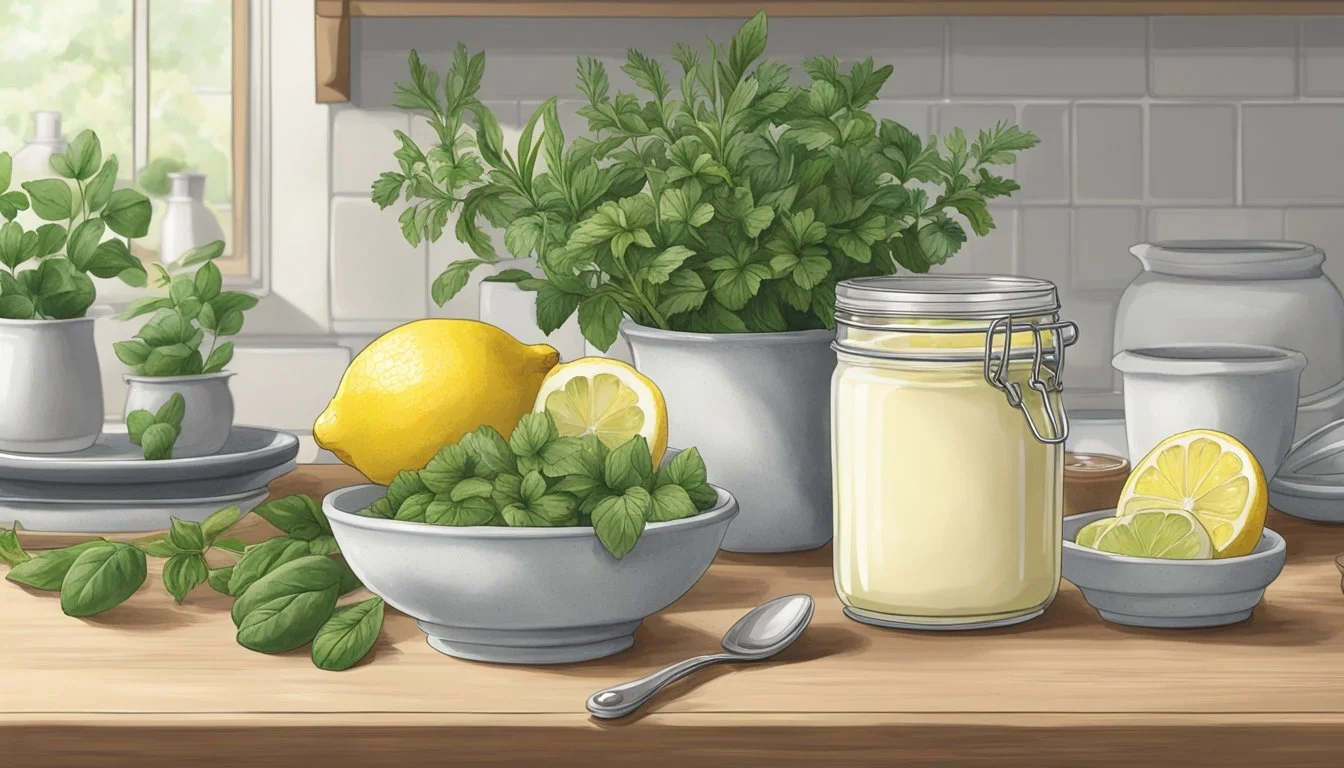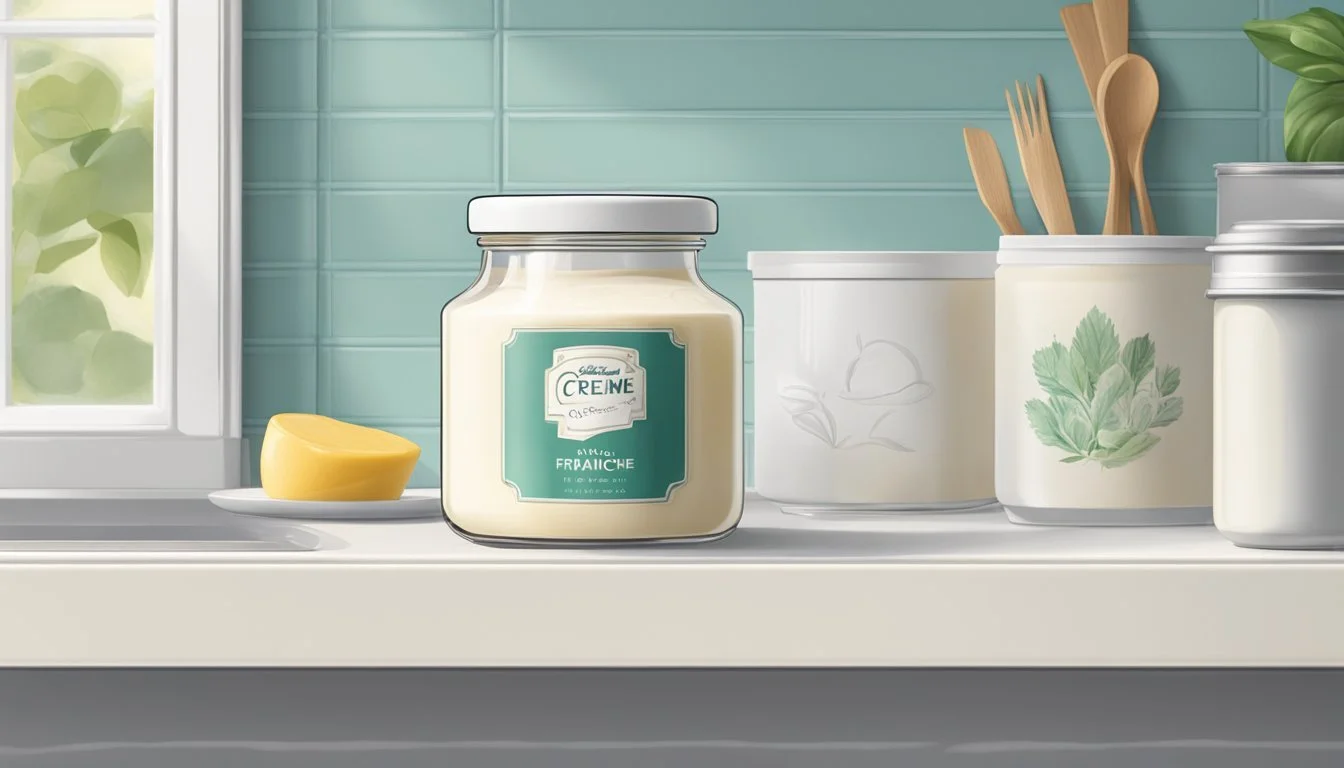Does Crème Fraîche Go Bad?
Understanding Shelf Life and Spoilage Signs
Crème fraîche, with its rich texture and tangy taste, has a stable shelf life compared to many dairy products. The longevity of crème fraîche is due to it being a cultured product, which means it contains beneficial bacteria that aids in preservation. It often remains safe to consume past the “best by” date on the packaging when left unopened.
However, crème fraîche can eventually spoil. When opened and exposed to varying temperatures or contaminants, the quality begins to degrade over time. Signs of spoilage include an unpleasant sour smell, separation of the cream, lumpiness, or the presence of mold. Proper storage in the refrigerator, at temperatures between 36°F (2°C) and 40°F (4°C), is essential to extend its usability period as much as possible.
Understanding Crème Fraîche
Crème fraîche is a dairy product celebrated for its rich flavor and versatility in cooking. This section explores its identity, manufacturing process, and key characteristics.
What Is Crème Fraîche?
Crème fraîche, pronounced "krem fresh," is a thick and rich dairy product with a tangy flavor reminiscent of sour cream. Its increased fat content, which is typically higher than that of sour cream or Greek yogurt, contributes to a creamier texture and a more refined taste. Unlike other dairy products, crème fraîche boasts a certain robustness that allows it to be heated without curdling, making it a versatile culinary ingredient.
How Is Crème Fraîche Made?
The production of crème fraîche begins with heavy cream. To create the signature tanginess and thicken the product, a culture of beneficial bacteria is added. This process is similar to that used in the production of buttermilk or cultured cream products. The mixture is then left at a specific temperature to ferment until it reaches the desired consistency.
Properties and Composition
Crème fraîche contains a high fat content, usually around 30-45%, which contributes to both its richness and stability in recipes. Its thickened yet smooth texture can be attributed to this fat, which also provides a luxurious mouthfeel. In comparison to products like sour cream, crème fraîche offers a less sour and more buttery flavor profile. Its composition allows it to be used in a variety of dishes, including both savory and sweet applications, without overpowering other ingredients.
Shelf Life and Spoilage
Crème fraîche, known for its rich texture and tangy flavor, maintains quality depending on storage conditions and whether it's opened. Shelf life varies, and recognizably off characteristics signal it's time to dispose of the product.
Typical Shelf Life
Unopened crème fraîche generally lasts up to six weeks past the 'best by' date if kept refrigerated properly. Once opened, it is advisable to consume it within one week to guarantee freshness and quality.
Signs of Spoilage
If crème fraîche exhibits a sour or unusual smell, has visible mold, or shows a watery texture, it has likely gone bad. These indicators are clear signs that the crème fraîche is not safe for consumption and should be discarded to avoid food safety issues.
Factors Influencing Shelf Life
The duration crème fraîche remains fresh is influenced by:
Refrigeration Temperature: Optimal refrigeration is between 36°F (2°C) and 40°F (4°C).
Frequency of Use: Every time crème fraîche is exposed to air, its shelf life diminishes.
Packaging Integrity: Unbroken seals and airtight packaging extend shelf life by minimizing contamination.
Extending Shelf Life and Preservation
To prolong the shelf life of crème fraîche:
Store Appropriately: Placing it in the back of the refrigerator ensures a consistent and cold temperature.
Seal Tightly: After opening, ensure the crème fraîche container is sealed tightly between uses to reduce air exposure.
Freezing: Although not ideal due to texture changes, freezing crème fraîche can extend its usability. Use within two months and thaw in the refrigerator before use.
Culinary Applications
Crème fraîche, known for its rich and tangy flavor, is a versatile ingredient and can be used in an array of cooking methods and as a topping. It enhances the taste and texture of many dishes without overshadowing other flavors.
Crème Fraîche in Cooking
In the realm of cooking, crème fraîche is frequently utilized as an integral component to create creamy sauces and soups. Its high fat content allows it to add a smooth and velvety texture to dishes without the risk of curdling under heat, unlike sour cream. For instance, incorporating crème fraîche into a pasta sauce works to balance the acidity of tomatoes while instilling a gourmet richness. Similarly, when mixed into scrambled eggs, it contributes to a more tender and luxurious consistency.
Crème Fraîche as a Topping and Garnish
Crème fraîche also excels as a topping and garnish. It’s often gently dolloped on desserts for a hint of sourness, enhancing the overall sweetness. For savory applications, it can be added atop baked potatoes or soups, where its coolness contrasts and complements the warmth of the dish. Its tangy flavor can elevate simple preparations, turning everyday meals into a sophisticated experience.
Making Homemade Crème Fraîche
Although crème fraîche can be found in gourmet food stores, homemade crème fraîche is a cost-effective and straightforward alternative. By mixing pasteurized heavy cream with buttermilk and allowing the mixture to ferment at a warm temperature, chefs can create crème fraîche that matches the quality of store-bought versions. This process results in a bespoke ingredient with a freshness that can notably enhance any dish it’s featured in.
Compatibility with Other Ingredients
Crème fraîche is a versatile dairy product that enhances a variety of ingredients with its rich, tangy flavor. It can be substituted for other creams and pairs well with both sweet and savory components in numerous recipes.
Substituting Crème Fraîche
Crème fraîche can be replaced with several dairy items when necessary. Full-fat Greek yogurt or mexican crema are excellent substitutes in cold preparations, maintaining a similar creaminess with a bit of tang. For cooking applications, one can use heavy cream or sour cream, though the latter should be added at the end to prevent curdling. Buttermilk can also step in, offering a lighter texture and a tangier taste.
Pairing with Fruits and Sweets
The rich texture of crème fraîche complements the natural acidity in fruit, making it a perfect accompaniment to both fresh and cooked fruit desserts. It adds depth to sweets, often cutting through the sweetness and balancing the flavor profile. When mixed with a little sugar, crème fraîche serves as a subtle, less-sweet alternative to whipped cream.
Use in Savory Dishes
Crème fraîche is a staple in savory dishes, ranging from pasta to eggs. Its ability to withstand high temperatures without curdling makes it suitable for sauces and soups. It can either blend seamlessly into the dish or provide a slight contrast when used as a garnish. Herbs and spices mix well with crème fraîche, making it a robust base for marinades and dressings, and even a replacement for mayonnaise in certain recipes.
Health and Nutrition
The health and nutrition profile of crème fraîche is marked by its high fat content and presence of beneficial nutrients like calcium and probiotics. This cultured dairy product also features components that support bone and cardiovascular health.
Nutritional Content
Crème fraîche boasts a rich array of nutrients, primarily influenced by its manufacturing process which involves the addition of lactic acid bacteria to cream. The bacteria thickens the cream and imparts a tangy flavor similar to that of cultured buttermilk or lemon juice added to cream. It may have a fat content ranging from 30 to 40 percent, higher than many other dairy products.
Here is a breakdown of the primary nutritional components per 100g serving of crème fraîche:
Calories: Approximately 292
Carbohydrates: 2.8g
Fat: 30g
Protein: 2.1g
Calcium and Vitamins: Varies by brand, but generally provides essential nutrients
Dietary Considerations
When considering crème fraîche for one’s diet, it is important to account for its high fat content, which can impact overall caloric intake. Despite the fat content providing a creamy texture and rich flavor, individuals monitoring their calorie or fat consumption may need to consume this product in moderation. Typically, crème fraîche is pasteurized, which makes it a safe inclusion in many diets. Furthermore, the probiotics present in crème fraîche contribute a positive aspect to gut health, aiding digestion.
Purchasing and Storage Tips
When buying crème fraîche, it's crucial to select a high-quality product and store it properly to ensure its longevity. Proper storage maintains the product's flavor and prevents spoilage.
Selecting Quality Crème Fraîche
When purchasing crème fraîche, shoppers should look for containers with a clear expiration date and select from a refrigerated section to ensure freshness. Brands like Vermont Creamery are known for their quality but may come with a higher price tag; the investment often signifies a superior product. The packaging should be intact and well-sealed to avoid the introduction of bacteria that can cause the product to deteriorate faster.
Storing Crème Fraîche at Home
Once purchased, crème fraîche should be stored in the refrigerator at a consistent temperature ranging between 36°F and 40°F. Room temperature is not suitable for crème fraîche as it can lead to bacterial growth and accelerated spoilage. For optimal storage:
Refrigerate immediately: Place the crème fraîche in the refrigerator as soon as possible after purchasing.
Constant Temperature: Ensure your refrigerator maintains the recommended temperature range.
Avoid the Door: Store the product on a stable shelf rather than the refrigerator door to protect it from temperature fluctuations caused by opening and closing.
By adhering to these purchasing and storage tips, crème fraîche can be enjoyed in its best condition for the duration of its shelf life.







